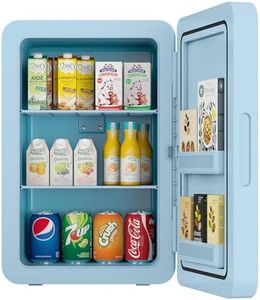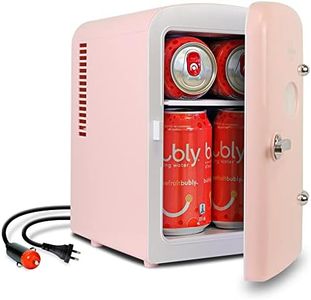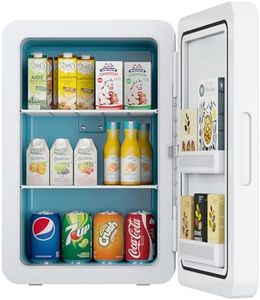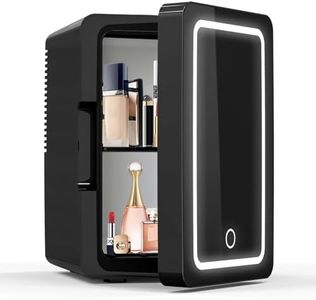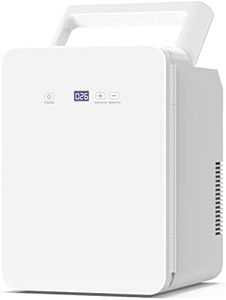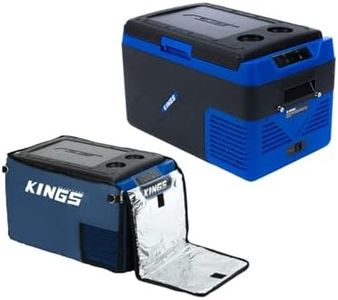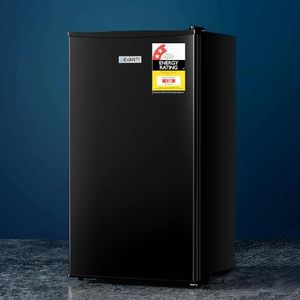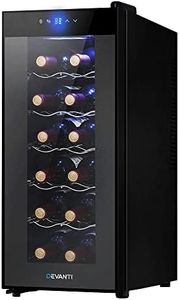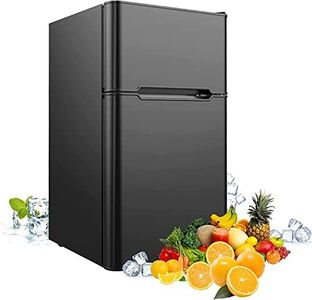We Use CookiesWe use cookies to enhance the security, performance,
functionality and for analytical and promotional activities. By continuing to browse this site you
are agreeing to our privacy policy
10 Best Mini Fridges
From leading brands and best sellers available on the web.Buying Guide for the Best Mini Fridges
Selecting a mini-fridge can make your life more convenient, whether it's for a dorm, bedroom, office, or small apartment. To make a good choice, it's important to understand which features matter most for your needs, how to compare them, and how to decide what's essential. By learning about key specifications, you'll be able to find a mini-fridge that provides the right balance of space, efficiency, and functionality for you.Capacity (measured in liters or cubic feet)Capacity tells you how much food and drink you can store in the fridge. It's important because a small fridge may be perfect for just drinks and snacks, while a larger one can hold enough for meal prep or more people. Capacities usually range from about 1 to 5 cubic feet. Smaller models (1–2 cubic feet) are good for keeping a few cans, a lunch, or small snacks. Medium ones (2.5–3.5 cubic feet) can handle drinks plus some groceries, while larger ones (4–5 cubic feet) can fit meal ingredients or leftovers. To pick the right size, consider what you plan to store, how often you shop, and how much space you have.
DimensionsThe physical size of the fridge is crucial, especially for tight spaces. Dimensions usually include height, width, and depth. Compact models can fit under desks or in corners, while larger ones need more floor space. Before choosing, measure the area where you plan to put the fridge and leave a bit of extra space for ventilation around it. If your space is very limited, opt for a slimmer or shorter version.
Energy EfficiencyEnergy efficiency shows how much electricity the fridge uses, which impacts your utility bills and environmental footprint. Fridges with better energy ratings use less power. Look for fridges with an energy label showing annual energy consumption. Highly efficient models are more eco-friendly and cheaper to run if the fridge will be plugged in 24/7. If you only need to use your fridge occasionally, this matters a bit less.
Freezer CompartmentSome mini-fridges include a small freezer compartment, while others do not. The freezer section allows you to store frozen items like ice cream or frozen meals but usually has limited space and sometimes struggles to keep things fully frozen. If you need to freeze items regularly, look for a model with a clearly defined freezer area. If you don’t use frozen foods much, a fridge-only option can provide more room for fresh food.
Adjustable ShelvingShelving can be fixed or adjustable. Adjustable shelves give you the flexibility to fit larger bottles, containers, or oddly shaped items. If you expect to store a variety of items or need to fit taller bottles, adjustable shelves will make this easier. If your needs are simple, fixed shelves are fine and may be less likely to break.
Noise LevelMini-fridges can produce varying levels of noise, which is important if you're using them in bedrooms, offices, or quiet spaces. Noise is usually measured in decibels (dB) and ranges from very quiet (under 40 dB) to noticeable (over 45 dB). If you're sensitive to noise or will keep the fridge in a quiet room, choose a quieter model. If sound isn't an issue, this won’t matter as much.
Defrosting MethodThere are two main methods, manual and automatic (auto-defrost). Manual defrost requires you to turn off the fridge and let the ice melt, which can be time-consuming but is common in smaller models. Auto-defrost is easier but can slightly add to energy use. If convenience is essential, look for auto-defrost. If you don’t mind occasional maintenance, manual defrost models tend to be a bit simpler.
Door Design and StorageSome doors are reversible, allowing you to change which side they open from, which helps if space is tight. Door storage features like bottle racks or can dispensers make it easier to organize drinks and small items. If you have tight space or want to organize your snacks and drinks efficiently, pay attention to these features.
